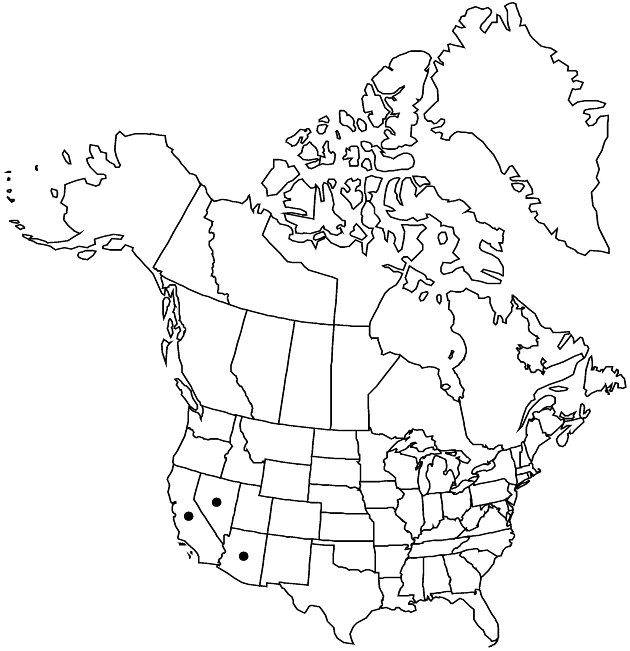Difference between revisions of "Brickellia desertorum"
Proc. Biol. Soc. Wash. 7: 68. 1892.
imported>Volume Importer |
imported>Volume Importer |
||
| Line 45: | Line 45: | ||
|publication year=1892 | |publication year=1892 | ||
|special status= | |special status= | ||
| − | |source xml=https:// | + | |source xml=https://bitbucket.org/aafc-mbb/fna-data-curation/src/2e0870ddd59836b60bcf96646a41e87ea5a5943a/coarse_grained_fna_xml/V19-20-21/V21_1254.xml |
|tribe=Asteraceae tribe Eupatorieae | |tribe=Asteraceae tribe Eupatorieae | ||
|genus=Brickellia | |genus=Brickellia | ||
Latest revision as of 21:09, 5 November 2020
Shrubs, 80–200 cm. Stems intricately branched, densely puberulent, often gland-dotted. Leaves opposite or alternate; petioles 1–2.5 mm; blades 3-nerved from bases, ovate, 3–13 × 4–14 mm, bases obtuse to truncate, margins crenate-serrate, apices obtuse, faces gland-dotted and tomentulose to densely puberulent. Heads in paniculiform arrays. Peduncles 0–3 mm, gland-dotted. Involucres cylindric, 8–10 mm. Phyllaries 20–24 in 4–7 series, greenish or brownish, 3–4-striate, unequal, margins scarious (apices acute to apiculate); outer broadly ovate (granular-puberulent), inner lanceolate to lance-linear (glabrous or tomentulose, often gland-dotted). Florets 8–12; corollas white, 4.5–5 mm. Cypselae 2–3 mm, scabrous; pappi of 12–15 white, smooth or barbellulate bristles.
Phenology: Flowering Sep–Mar.
Habitat: Dry hillsides, outwash slopes, canyons
Elevation: 200–1400 m
Distribution

Ariz., Calif., Nev., Mexico, West Indies, Central America (to Nicaragua).
Discussion
Selected References
None.